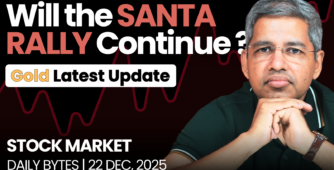
Markets refused to go down today. FIIs continue to buy on a daily basis, and there’s a paradigm shift in the mood of the market. Regardless of where the US market goes, the Indian market is reasonably stable, at least for now. Despite the major crisis that happened yesterday in our country—and the potential for some conflict to start—the markets are not yet bothered about any downward reaction. This indicates a very strong situation in the market right now.
Today’s topic of discussion is how our own ego prompts losses in our portfolios, and why we need to examine and improve the biases that most investors suffer from. That will be the second half of this post.
Where is the market headed?
Market Overview
Nifty50 is down 0.34%. You can see in the last two sessions, the market has not moved substantially. But considering how far we’ve come in such little time, a reactionary drop of 10–20% would be natural—yet even that is not coming by. People are now waiting for a dip to buy. Once it crossed 23,200–23,800, it gave hope that the downward trend has ended. Whether we consolidate or an uptrend begins is hard to say, but this is not a market to be sold on rise. Instead, it’s a buy-on-dips market, unless we break down below 23,400, in which case some weakness may return.
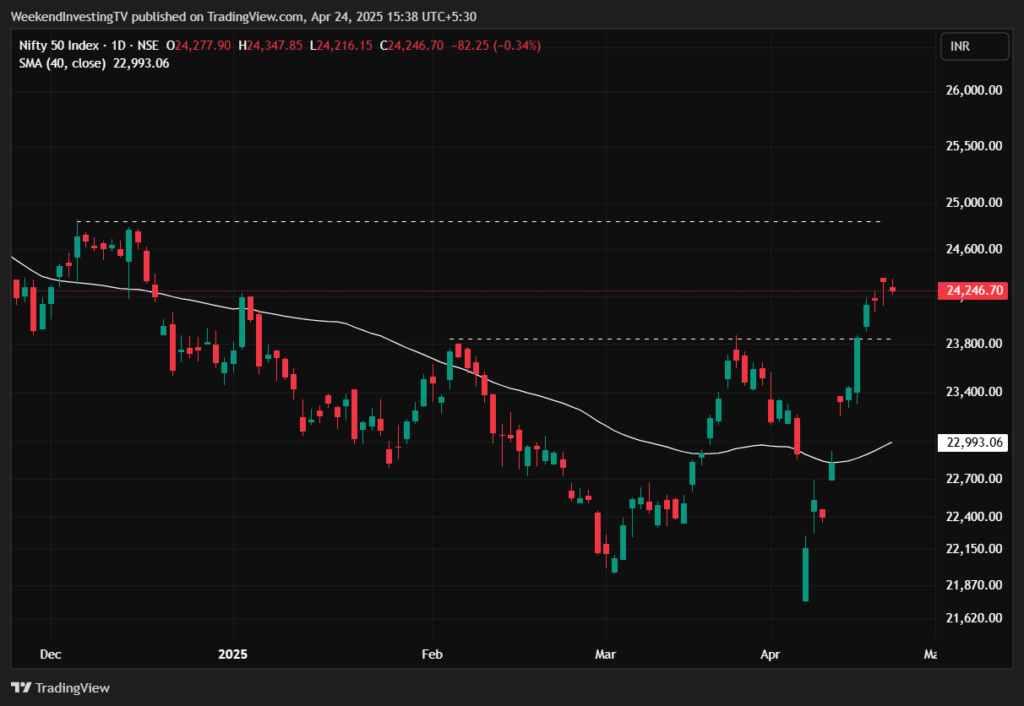
Nifty Next 50
Nifty Junior is absolutely flat at -0.15%, so nothing major there.
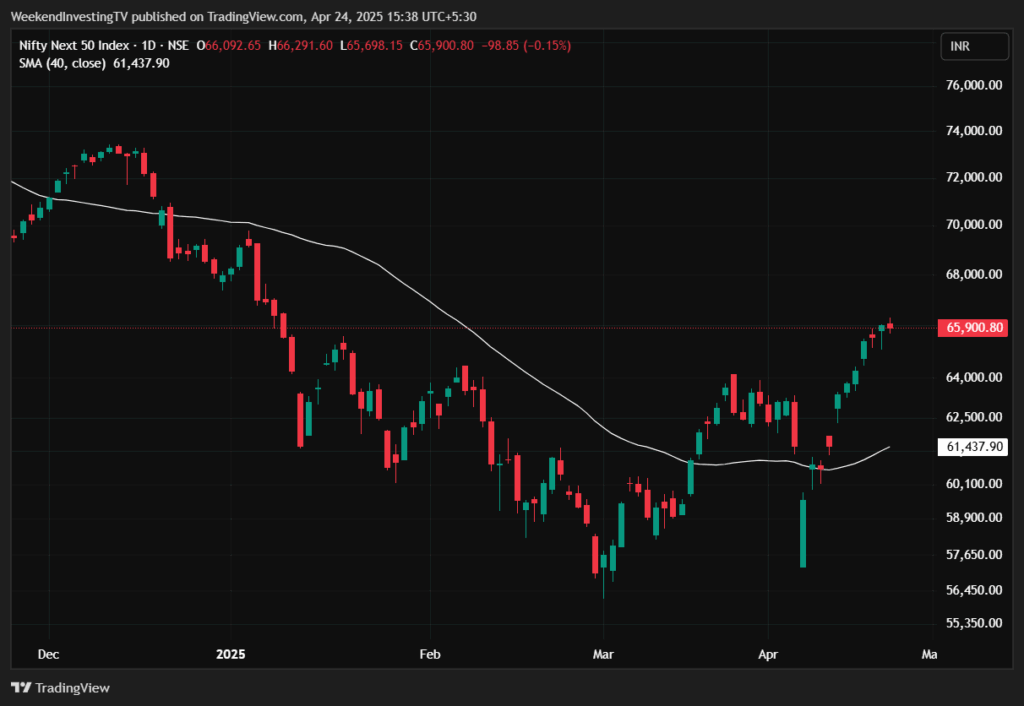
Nifty Mid and Small Cap
Midcaps are also flat at -0.17%. Small caps remain flat too.
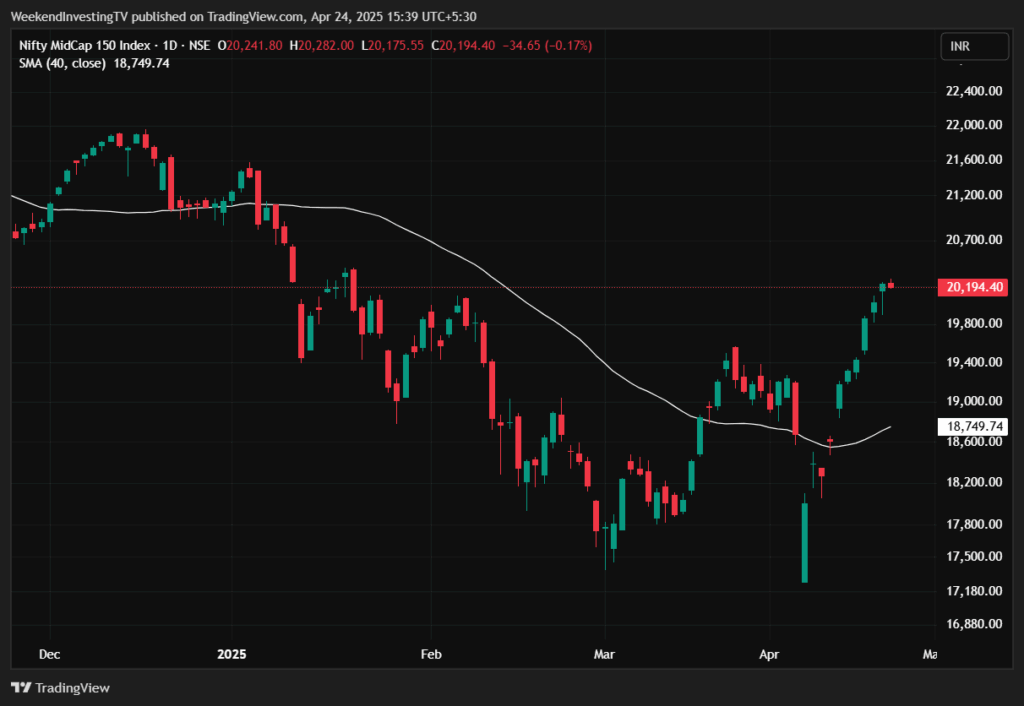

Bank Nifty
Bank Nifty is down 0.3%, but this is negligible considering the run-up we’ve seen.
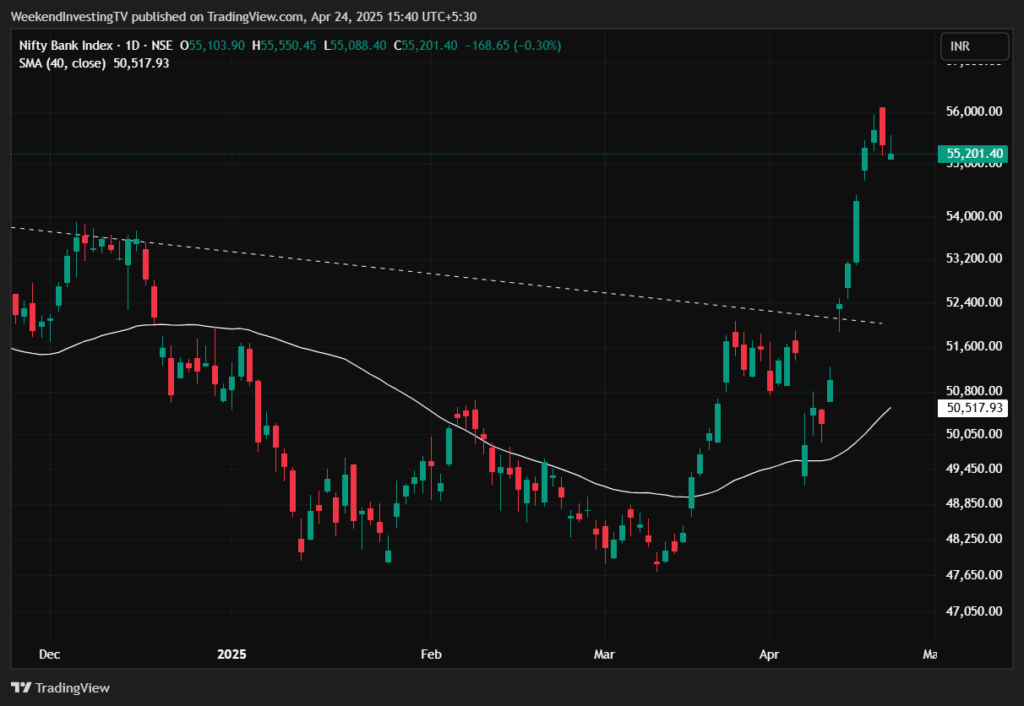
GOLD
Gold collapsed in two days from nearly ₹10,100 to ₹9,500, and has since bounced back a little, up 1.32%. The long-term trend on gold is still intact, and only if we go below ₹9,200 INR on Indian gold will short-term worries begin to appear.
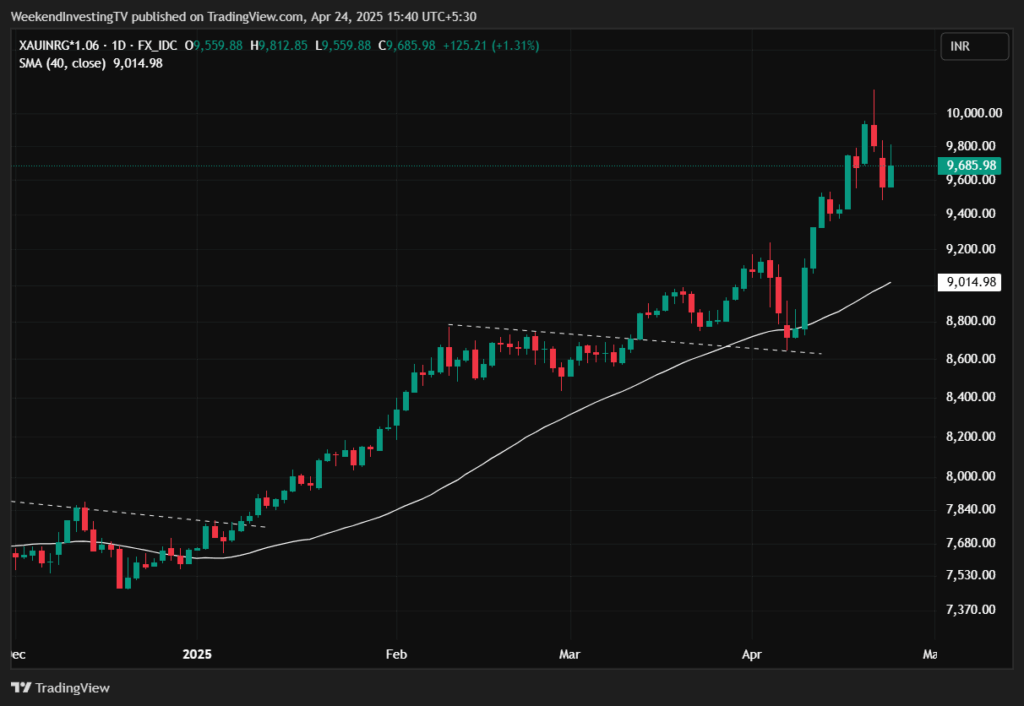
Advance Decline Ratio
The advance-decline trend is slightly in favor of bears, with 303 declines to 197 advances. Not much action in the broader market today.

Heat Maps
However, FMCG cracked today, with Hindustan Unilever down 4%, ICICI Bank off by 1.52%, and Bharti Airtel losing 1.9%, making them some of the bigger losers in the Nifty space. In the Nifty Next space, we saw declines in VBL, Lodha, CG Power, TVS Motor, and Swiggy.
On the gaining side, Divi’s Lab and Zydus Life performed well—pharma stocks were gaining today, and Adani Energy posted a strong show in terms of results.
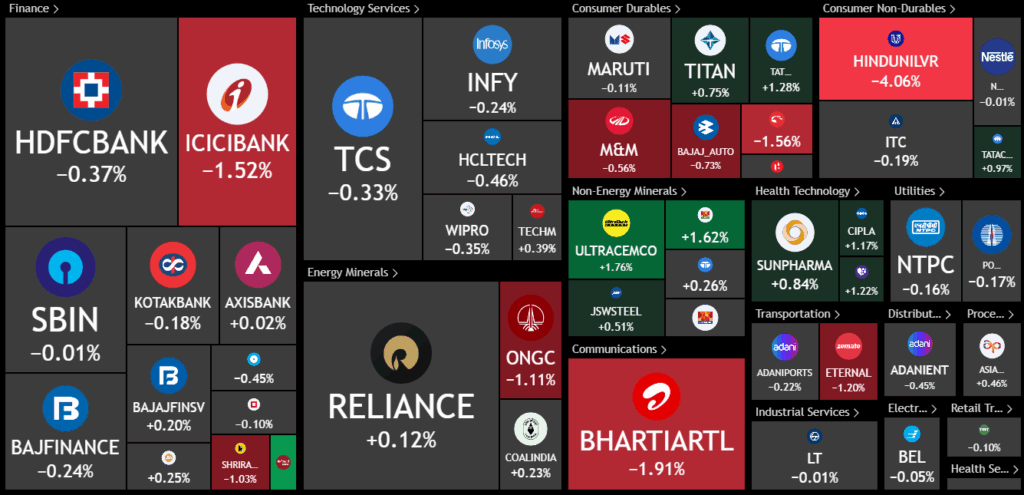
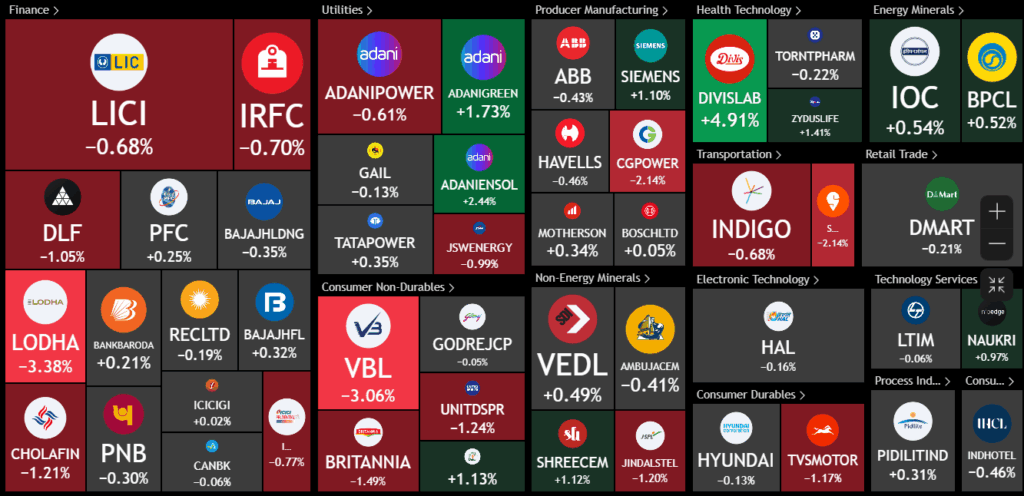
Sectoral Overview
Sectorally, pharma outperformed with a 1.1% gain, while most of the market was flat or negative.
It was a defensive day, and one might have expected FMCG to perform—but it didn’t. FMCG was down 1.1%, mainly due to Hindustan Lever. Real estate was also down 1.4%.
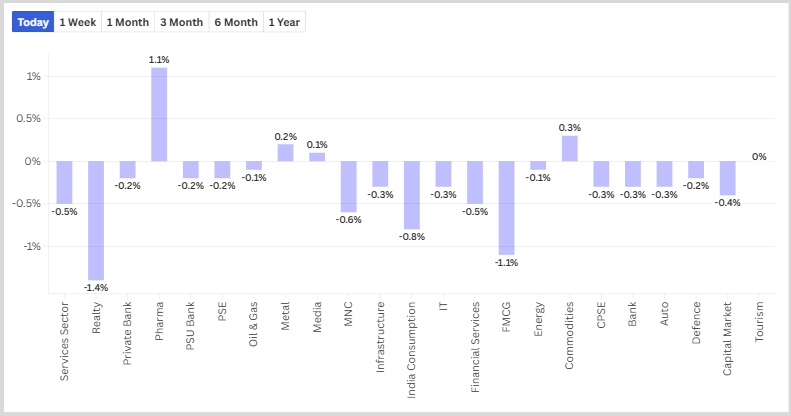
Sectors of the Day
Nifty Pharma Index
Pharma has now recovered to approximately where it was in December, meaning that over the last four to five months, there is no net loss in Pharma.
Companies like Netco Pharma, Divi’s Lab, Ajanta Pharma, Mankind Pharma, and JB Chemicals saw decent moves today.
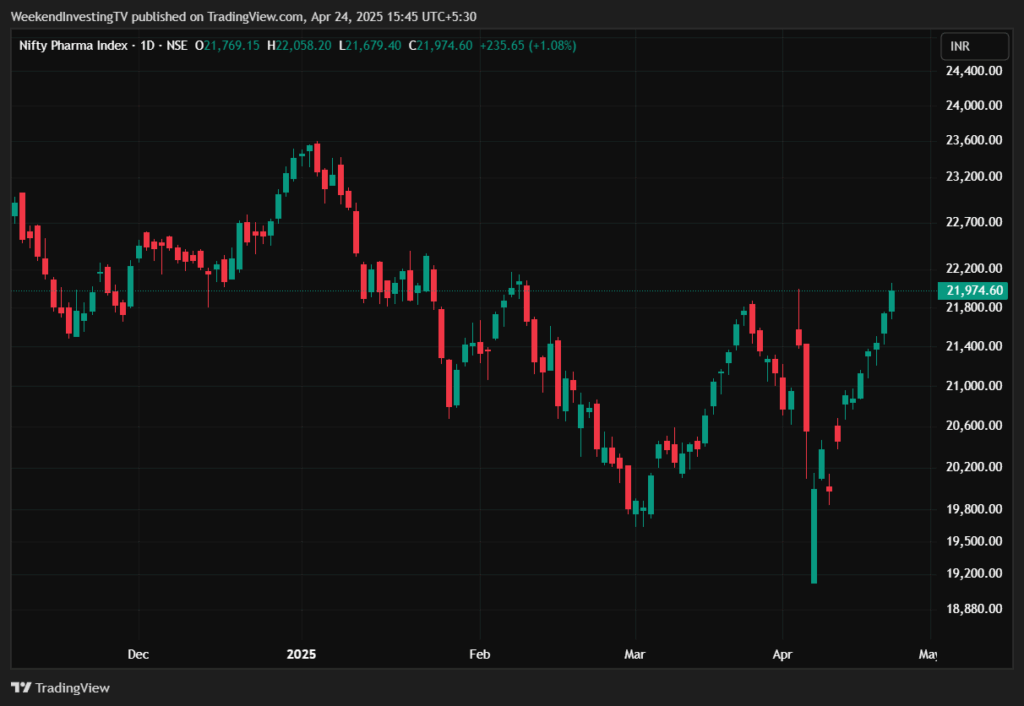
Story of the Day : Behavioral lessons and investing biases.
Take the story of Mr. Ravi and the stock Zomato, now renamed Eternal. Ravi was extremely passionate about the potential of Zomato. When the IPO launched on 14th July 2021 at ₹76, Ravi was convinced it was undervalued. He rallied his entire family to apply for allotments, and when it listed on 23rd July at ₹116, hit ₹138, and closed at ₹126, he saw a 66% gain on Day 1.
Despite his family urging him to book profits, Ravi decided to hold, believing this would be a multibagger in 5–10 years. His belief seemed validated when the stock hit ₹160 within four months—a 110% return. He felt justified in his decision and told his family to wait for a 10x return.
However, instead of going 10x, the stock began to fall. By April 2022, it was back at its listing price, having dropped from ₹160 to ₹116. Soon after, it fell back to ₹76, and eventually hit ₹40 within less than two years—marking a 47% capital loss.
Now Ravi faced confusion and regret, despite nothing fundamentally changing in the company’s growth plans. His original long-term thesis was still intact, but the short-term price movement had shaken his belief.
He began justifying the losses by blaming external factors: the stock had surged beyond fundamentals, a global tech sell-off, anchor exits, and an unclear profit path due to acquisitions.
This is an example of self-attribution bias, where one takes credit for success but blames external forces for failures.
In real life, this bias appears in parenting (taking credit for achievements, blaming school/media for failures), punctuality (credit to self for being on time, blame traffic when late), and relationships (crediting oneself for harmony, blaming others during conflict).
Recognizing these biases can significantly improve investing performance. Most people appreciate their stock-picking skills during bull runs but blame bad luck or external events when losses occur. This leads to a false sense of skill, not learning from mistakes, hindsight overconfidence, confirmation bias, and misjudging one’s abilities.
Momentum investing, on the other hand, can help mitigate these biases. With clear-cut rules, you don’t succumb to narratives. For example, if Eternal were in a momentum portfolio, a sound strategy would not enter the stock until at least six months post-IPO, allowing time to settle, review fundamentals, and avoid premature hype.
If the stock showed downward trends early on—all-time lows, lower highs, and lower lows—it would have been filtered out. Only when upward momentum and breakouts emerged—say around July–August—would a strategy initiate positions. Gains of 140% could have been captured, and the exit made upon signs of weakness.
This way, you’re never stuck. You’re constantly seeking where to best deploy your capital. Instead of “What should I do with this losing stock?”, your mindset shifts to “Where is the next opportunity?”
Even if a stock rallies 650% from the bottom, capturing 20–30% of it is plenty. The key is to rotate capital effectively, based on data—not emotion.
You follow rules to enter and exit, manage position sizing, limit exposure, and remove ego from the process. This avoids emotional attachment and narrative-based investing.
There are no hindsight stories, no illusions of being smarter than the market. You simply react to price strength and stay out when price weakens. No opinions. Just objective strategy.
Most people—about 98%, in my experience—think they can beat the market. But the market is supreme, and it humbles everyone eventually. Success comes from a system-driven approach, not personality or personal intelligence.
Even if your holding period is three to six months, as long as your strategy is long-term in nature, you’re on the right track. If you go against trends, either don’t do trend following at all or stick to it fully—don’t flip-flop styles based on market conditions..
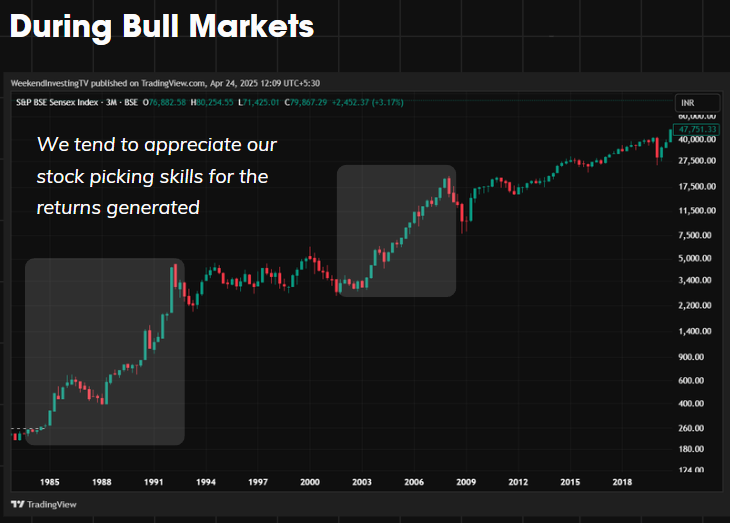
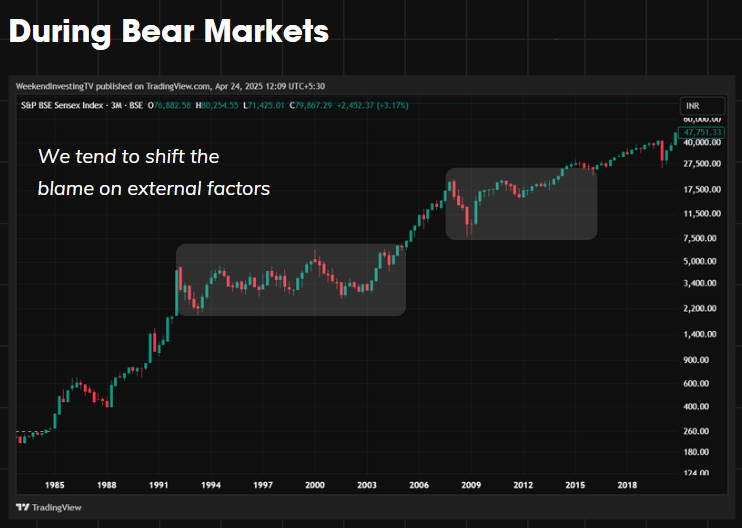
WeekendInvesting launches – The Momentum Podcast
Join Alok Jain, founder of WeekendInvesting, in this insightful Momentum Podcast episode featuring Ravi Garg, a seasoned investor with nearly 30 years of market experience! From his early days navigating India’s stock market in the 1990s to mastering momentum investing, Ravi shares his journey of triumphs, failures, and game-changing lessons. 🚀
🔸 Discover his powerful ETCS model (Emotions, Time, Corpus, Strategy) for building wealth, learn why 80% of investors fail to beat the market, and get practical tips for new investors to seize India’s booming market opportunities.
Fill in the form below to be part of this exciting series : https://forms.gle/HDbEk9xrTjVecW2c9
Disclaimers and disclosures : https://tinyurl.com/2763eyaz

